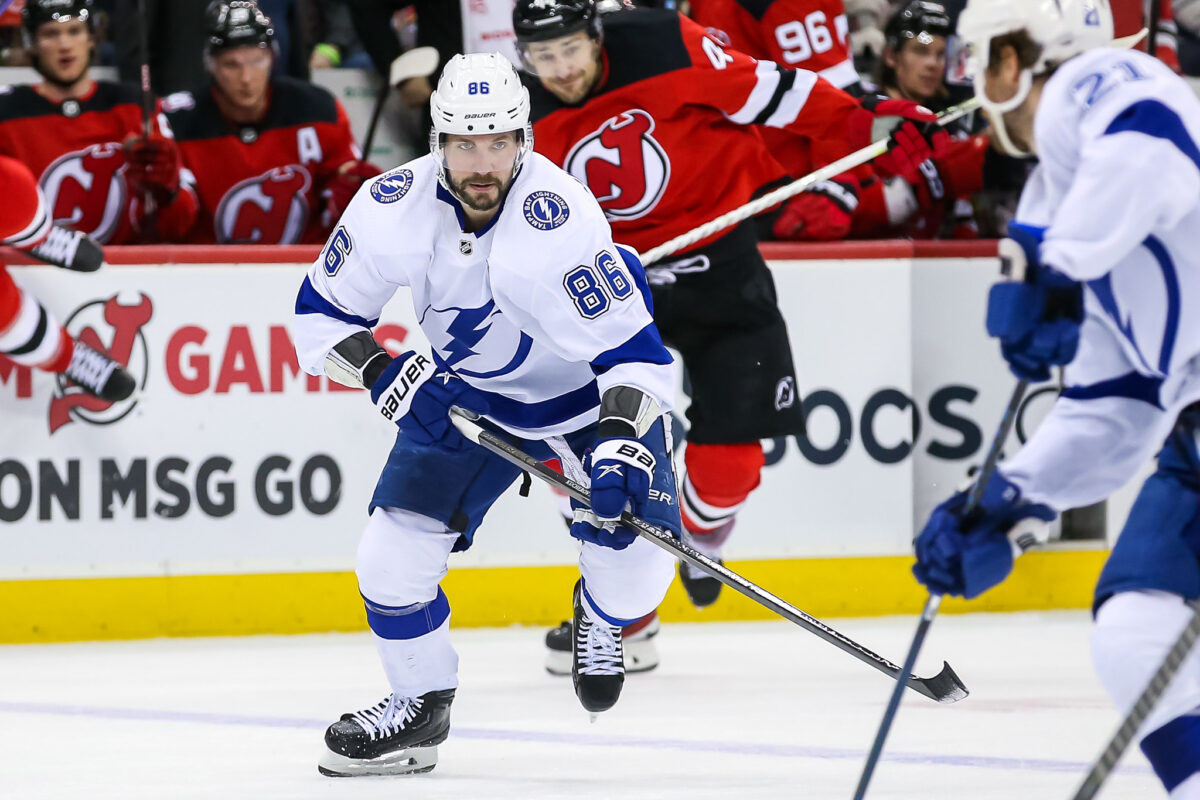After three straight appearances in the Stanley Cup Final, the Tampa Bay Lightning exited the playoffs early last season. This departure provided a depleted team with some much-needed time to rest and heal, positioning the team to make another strong push this season. Unfortunately, news emerged in September that goalie Andrei Vasilevskiy would miss two months after undergoing back surgery. Early adversity can often fortify a team, and many, including myself, saw Vasilevskiy’s absence as an opportunity for the team to establish themselves without the superstar goaltender, only to be boosted by his return.
Anyone who has watched the Lightning since Vasilevskiy’s first game on Nov. 24 knows that this has been anything but the case. The Lightning have posted an 8-8 record–not exactly the run you hope for with a future Hall of Fame goalie. The mediocre record is not a reflection of Vaislevskiy’s performance. His play, while not quite to the level we have come to expect, has been solid (8-7 record, 2.78 goals against average (GAA), and .907 save percentage (SV%)). Instead, Vasilevskiy has, oddly enough, highlighted the underlying issues plaguing the Lightning. The team cannot rely on goaltending to hide or fix these issues if they want another shot at a Stanley Cup.
Inconsistent Performances Lead to Lopsided Results
One of the most glaring problems for the Lightning over the past month, or so is the high-scoring, lopsided games. Vasileveskiy’s first five games back included an 8-2 win against the Carolina Hurricanes, an 8-1 loss to the Dallas Stars, and a 4-1 win in a rematch a couple of days later. The troubles continued throughout November and December. Tampa Bay surrendered four or more goals nine times in 16 games. Of those nine games, they lost seven. Conversely, Tampa scored four or more goals six times in that same span and won each. It is difficult to win when you are uncertain which team will show up at the rink.

Tampa Bay allows an average of 3.43 goals against per game, the seventh worst in the league. It makes sense then why so many of the Lightning’s wins are high-flying games–they need to score at least four goals to have a chance to win. This run-and-gun style clearly has not served the team well and leads to the natural question: Why is Tampa allowing so many goals?
Lack of Roster Depth
A key ingredient to Tampa Bay’s success the past few seasons was the team’s depth both at forward and defense. Salary cap restraints have forced the team to move or lose these valuable players (Yanni Gourde, Alex Killorn, Blake Coleman, Barclay Goodrow, Ryan McDonagh, and Zach Bogosian to name a few). Today, the Lightning’s core players like Vasilevskiy, Nikita Kucherov, Victor Hedman, Brayden Point, and Steven Stamkos remain, but the team lacks the same punch on the bottom end of the lineup.
Related: NHL News & Rumors: Maple Leafs, Oilers, Lightning, Devils
For example, the bottom six forwards have combined for 27 of the team’s total goals (about 22%). Compare that to the league-leading Vancouver Canucks whose revamped third and fourth lines have combined for 41 goals (about 30%) of the team’s offense. That is a difference of 8% and indicates that Vancouver’s bottom-tiered players are showing up more consistently than the Lightning’s. When push comes to shove, and you are playing against other quality teams, you need solid performances up and down the lineup. Simply put, Tampa Bay is top-heavy.
Road Game Woes
Much like the Lightning’s inconsistent scoring and defense, their record at home versus on the road showcases a tale of two teams. Tampa Bay boasts an impressive 10-3-3 record at home but has secured an unimpressive 7-10-2 record on the road. At home, the Lightning rank eighth best. On the road, they are the 10th worst.

A look at other baseline statistics reveals the Lightning’s inconsistency. They have a .676 winning percentage at home, a 34.5% power play rating, and are 84% successful on the penalty kill. Whenever they depart the Sunshine State, those numbers drop significantly: .421 winning percentage, 24.5% power play, and 76.8% penalty kill. Given their vastly different records and statistics at home and on the road, it is not surprising to see the Lightning just about in the middle of the league standings at 15.
What Needs to Be Done This Season
The insights here do not paint the most promising picture for the Tampa Bay Lightning this season. Nevertheless, there remains reason for optimism. They are tied for the second wild-card spot in the Eastern Conference despite their troubles. Core players like Kucherov, Point, Hedman, and Stamkos are performing. Vasilevskiy, who has displayed his astonishing goaltending abilities at times, has an opportunity to step up and stabilize his game and team. It seems there are two missing ingredients: a solid bottom-six forward and one additional defenseman.
There has been little talk of the Lightning trading or acquiring players because they have no cap space. However, if the Tampa Bay Lightning want to remain Stanley Cup contenders this season, they need to add a piece or two. It does not matter how well Kucherov continues to play. It does not matter if Vasilevskiy regains his consistent, elite form. His return uncovered the issues causing the Lightning’s persistent struggles.
